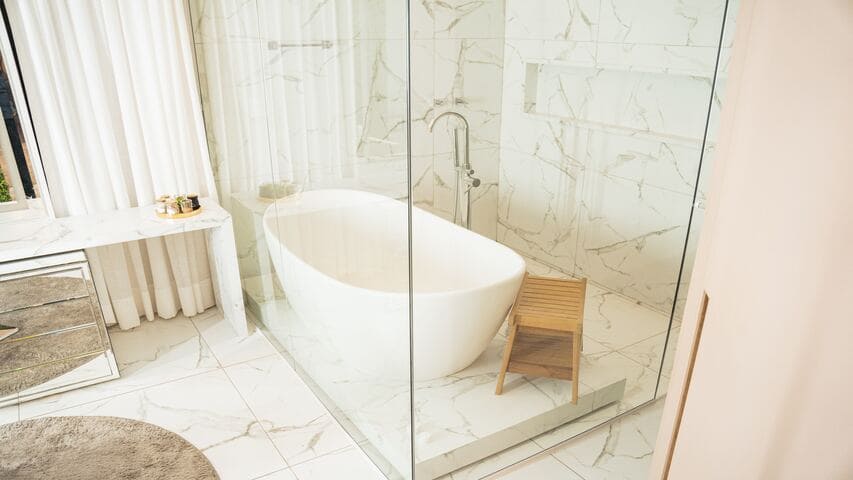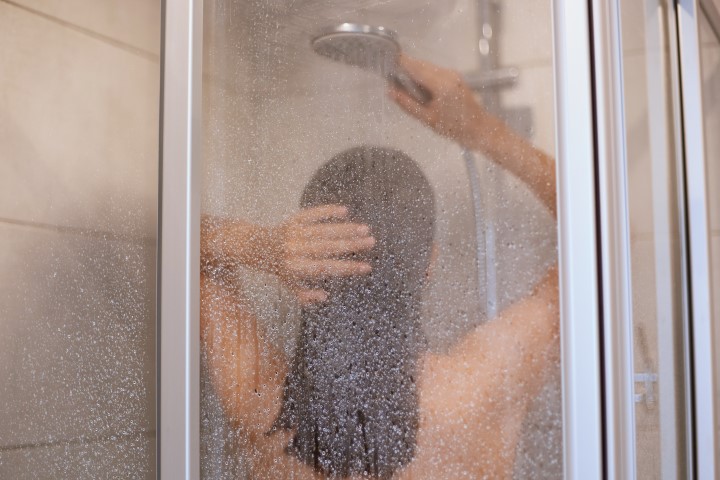Finding the Best Bathtub for Your Home: A Beginner's Guide

Finding the Best Bathtub for Your Home: A Beginner's Guide
Introduction:
Are you dreaming of sinking into a luxurious bathtub after a long day's work? Choosing the right bathtub for your home can transform your bathing experience from ordinary to extraordinary. In this beginner's guide, we'll walk you through everything you need to know to find the perfect bathtub that suits your needs and preferences.
1. Understanding Different Types of Bathtubs:
Let's start by breaking down the different types of bathtubs available in the market. From classic alcove tubs to freestanding soaking tubs, each type offers unique features and benefits. We'll explain the differences between them and help you identify which style would best complement your bathroom space.
a. Alcove Bathtub
An alcove bathtub is a type of bathtub that is designed to fit into a three-wall alcove, typically found in many bathrooms. These tubs are surrounded by walls on three sides, with only one side exposed, making them suitable for installation in spaces where there is limited room or where a shower and tub combination is desired. Alcove bathtubs come in various shapes and sizes, ranging from traditional rectangular tubs to more modern designs, and they can be made from materials such as acrylic, fiberglass, or porcelain.
b. Drop-in Bathtub
A drop-in bathtub is like a large basin that you place into a special platform or deck in your bathroom. It's unique because it doesn't sit directly on the floor like regular tubs. Instead, it's "dropped in" to a pre-built space, leaving the edges exposed. This setup gives you lots of freedom to customize the area around the tub to match your style and preferences. A drop-in bathtub offers flexibility in design, allowing for a seamless integration into a custom-built platform or deck
c. Freestanding Bathtub
A freestanding bathtub is a type of bathtub that stands on its own, separate from any walls or other fixtures in the bathroom. Unlike traditional built-in tubs that are typically installed against a wall, freestanding bathtubs are designed to be positioned anywhere in the bathroom space. They often serve as a centerpiece or focal point in the room due to their elegant and stylish appearance. Freestanding bathtubs come in a variety of shapes, sizes, and materials, including acrylic, cast iron, stone, and fiberglass, offering homeowners a range of options to suit their aesthetic preferences and functional needs.
d. Clawfoot Bathtub
A clawfoot bathtub is a type of freestanding bathtub that is supported by four decorative legs, resembling the claws of an animal, hence the name "clawfoot." These bathtubs are often made of cast iron and coated with enamel, although they can also be found in other materials such as acrylic or copper. Clawfoot bathtubs are typically designed with a sloping backrest for comfortable bathing and often feature ornate details on the exterior, such as intricate designs or decorative feet. They are known for their vintage and classic aesthetic, evoking a sense of nostalgia for older eras when they were more commonly used. Clawfoot bathtubs are popular choices for homeowners looking to add a touch of elegance and charm to their bathrooms.
e. Corner Bathtub
A corner bathtub is a type of tub specifically shaped to fit into the corner of a bathroom, maximizing space utilization. These tubs are typically triangular or wedge-shaped to snugly fit into corners. They come in various styles, including standard alcove tubs with one side open, and luxurious models with whirlpool or jetted features. Corner bathtubs are popular choices for smaller bathrooms or irregular layouts, offering both functionality and space-saving benefits.
f. Oval Bathtub
An oval bathtub is a type of freestanding or built-in tub characterized by its oval or elliptical shape. These bathtubs typically feature smooth, curved lines that offer a sleek and modern aesthetic. Oval bathtubs come in various sizes, ranging from compact models suitable for smaller bathrooms to larger, more luxurious options designed for spacious bathrooms.
Oval bathtubs are popular for their elegant and contemporary look, as well as their ergonomic design, which provides ample space for comfortable bathing. They are often made from materials such as acrylic, fiberglass, porcelain, or even natural stone, offering durability and versatility to suit different preferences and budgets.
g. Rectangular Bathtub
A rectangular bathtub is a type of tub characterized by its straight edges and sharp corners, forming a rectangular shape. This design provides a clean and modern aesthetic, suitable for a wide range of bathroom styles. Rectangular bathtubs come in various sizes and materials, offering versatility and functionality to fit different preferences and bathroom layouts. They provide ample space for comfortable bathing and soaking, making them popular choices for both practicality and visual appeal in bathrooms.
h. Whirlpool Bathtub
A whirlpool bathtub, also known as a spa or jacuzzi tub, is a type of bathtub equipped with jets that produce a swirling or bubbling water massage effect. These jets circulate water throughout the tub, creating a therapeutic and relaxing experience for the bather. Whirlpool bathtubs typically feature adjustable jet settings, allowing users to customize the intensity and direction of the water flow to suit their preferences.
The jets in a whirlpool bathtub are strategically placed to target specific areas of the body, such as the back, legs, and feet, providing a soothing massage that can help alleviate muscle tension and promote relaxation. Some whirlpool tubs may also include additional features like built-in heaters to maintain water temperature, chromatherapy lighting for mood enhancement, and aromatherapy options for a sensory experience.
2. Factors to Consider Before Buying a Bathtub:
Before making a purchase, there are several important factors to consider. We'll discuss key considerations such as size, material, installation requirements, and budget. By understanding these factors, you can make an informed decision that aligns with your needs and lifestyle.
3. Exploring Popular Bathtub Materials:
Bathtubs come in a variety of materials, each with its own set of pros and cons. We'll explore common materials like acrylic, fiberglass, porcelain, and cast iron, highlighting their durability, maintenance requirements, and aesthetic appeal. Whether you prioritize affordability or luxury, there's a bathtub material that's perfect for you.
a. Acrylic: Acrylic bathtubs are lightweight, durable, and relatively affordable. They are available in a wide range of shapes, sizes, and colors, making them versatile and suitable for various bathroom styles.
b. Fiberglass: Fiberglass bathtubs are lightweight, easy to install, and typically more budget-friendly than other materials. However, they may be prone to scratching and fading over time.
c. Porcelain-Enameled Steel: These bathtubs feature a steel base coated with porcelain enamel. They are durable, easy to clean, and resistant to scratching and fading. However, they can be prone to chipping if a heavy object is dropped on them.
d. Cast Iron: Cast iron bathtubs are extremely durable and offer excellent heat retention properties, providing a comfortable bathing experience. They are also resistant to scratching and fading. However, they are heavy and may require extra support for installation.
e. Stone or Marble: Bathtubs made from natural stone or marble offer a luxurious and elegant look. They are durable and can withstand heavy use, but they are typically more expensive and require regular maintenance to prevent staining and etching.
f. Copper: Copper bathtubs are known for their unique appearance and excellent heat retention properties. They are durable and resistant to corrosion, but they can be expensive and may require occasional polishing to maintain their luster.
When choosing a bathtub material, consider factors such as durability, maintenance requirements, cost, and aesthetic preferences to select the option that best suits your needs and preferences.
4. Features and Options:
a. Size and Shape: Consider the dimensions of your bathroom and your personal preferences when choosing the size and shape of your bathtub.
b. Jetted or Soaking: Jetted tubs offer a spa-like experience with built-in jets for hydrotherapy, while soaking tubs provide a deep, relaxing soak without jets.
c. Overflow and Drainage: Look for tubs with efficient overflow systems and easy-to-clean drains to enhance functionality and cleanliness.
d. Accessories: Don't forget to consider accessories such as bath caddies, grab bars, and built-in shelves for added convenience and comfort.
Conclusion:
Choosing the perfect bathtub for your home doesn't have to be overwhelming. With the right knowledge and guidance, you can find a bathtub that fits your style, budget, and lifestyle. We hope this beginner's guide has equipped you with the information you need to make an informed decision. Here's to many relaxing baths in your future!











